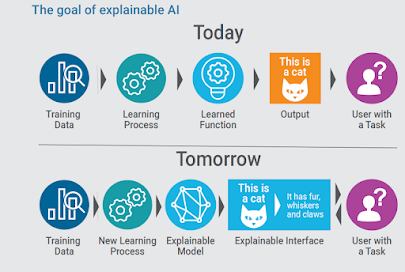Title: Exploring the Latest Trends in Artificial Intelligence (AI)
Introduction
Artificial Intelligence (AI) is reshaping industries, redefining possibilities, and transforming everyday life at a rapid pace. In recent years, advancements in AI have accelerated, leading to groundbreaking developments across fields such as healthcare, finance, education, and agriculture. In this post, we'll dive into some of the most exciting recent AI trends and explore how they are impacting various sectors and shaping the future.
1. Generative AI and Foundation Models
One of the biggest AI breakthroughs in recent times is the rise of generative AI. This technology, powered by advanced neural networks, can create original content, from text and images to music and even video. Tools like OpenAI's GPT-4, Google's PaLM, and Meta's LLaMA allow developers and creators to produce human-like conversations, generate realistic art, and design virtual environments.
- Impact: Generative AI is revolutionizing content creation, reducing the time and resources needed to produce creative work. It's also being used to create virtual customer service agents, write code, and simulate realistic training scenarios.
2. AI for Predictive Healthcare
AI is transforming healthcare by improving diagnostic accuracy and personalizing patient care. Predictive models can now analyze patient data to identify potential health issues before they become critical. For example, machine learning models can predict heart disease risk or identify early cancer signs from imaging scans.
- Impact: This trend is helping to save lives through early intervention, reducing healthcare costs, and giving healthcare providers powerful tools for better decision-making.
- Impact: Edge AI is enabling applications that require low latency, such as autonomous vehicles, smart cities, and industrial automation. It also enhances data privacy since data doesn’t have to leave the device.
With AI becoming integral to critical decisions, especially in finance, healthcare, and law, there’s a growing demand for AI systems to be interpretable. Explainable AI (XAI) allows us to understand how and why AI systems make specific predictions.
- Impact: XAI is crucial for ensuring transparency, building trust in AI systems, and meeting regulatory standards, particularly in sectors where accountability is key.
AI is making waves in agriculture, from crop management to livestock monitoring. Advanced computer vision models can detect crop diseases, recommend fertilizers, and monitor soil health. This tech improves efficiency and sustainability, helping farmers make informed decisions to optimize yield.
- Impact: AI helps tackle food security issues by improving yield predictions and reducing waste, making farming more sustainable and cost-effective.
Reinforcement learning is a machine learning technique where robots learn through trial and error. Recent developments in this field are allowing robots to perform complex tasks with minimal human intervention, from sorting items in warehouses to performing delicate surgeries.
- Impact: As robots learn to make decisions in real-time, they are becoming more versatile, enhancing productivity in manufacturing, healthcare, and logistics.
Frequently Asked Questions (FAQs)
1. What is AI, and why is it important?
AI, or Artificial Intelligence, is a branch of computer science focused on building machines capable of performing tasks that typically require human intelligence, such as visual perception, language understanding, and decision-making. AI is crucial because it enhances automation, optimizes complex processes, and can make data-driven predictions across various fields, improving productivity and innovation.
2. How does generative AI work?
Generative AI uses machine learning models, like neural networks, to generate new content from data patterns. It’s trained on vast amounts of data and learns to create outputs similar to what it’s seen, such as text, images, or music. Popular tools like GPT-4 and DALL-E are based on this technology, which can help automate content creation.
3. What’s the difference between traditional AI and edge AI?
Traditional AI often relies on cloud computing, where data is sent to a central server for processing. Edge AI, on the other hand, processes data locally on devices (like smartphones or IoT devices) without needing to upload data to the cloud, enabling faster responses and improved data privacy.
4. Why is explainable AI (XAI) becoming more important?
As AI is applied in sensitive areas like healthcare and finance, users and regulators need to understand how AI makes decisions. Explainable AI (XAI) makes AI decision-making more transparent, enabling users to trust AI systems by ensuring they are fair, accurate, and accountable.
5. How is AI transforming agriculture?
AI in agriculture helps farmers by analyzing data on soil, weather, and crop health to recommend actions that optimize yield and efficiency. AI can also detect crop diseases early, suggest proper fertilizers, and automate irrigation, making farming more sustainable and less labor-intensive.
6. What are the ethical challenges associated with AI?
AI poses ethical challenges like data privacy, bias, job displacement, and decision accountability. To address these, developers are working on creating “ethical AI” by establishing guidelines that prevent discriminatory outcomes and ensure transparency and user consent in AI applications.
7. How can I learn more about AI?
There are numerous free and paid resources to get started with AI. Websites like Coursera, edX, and Udacity offer beginner to advanced AI courses, covering everything from machine learning basics to deep learning and specialized applications in AI.
Call to Action
Are you as fascinated by these AI developments as we are? Follow our blog for more insights into AI, emerging technologies, and innovative solutions. Share your thoughts in the comments—let us know which trend you find most exciting or any AI applications you’re curious about. And if you have any questions, feel free to reach out!
Subscribe for Updates
Stay informed by subscribing to our blog! Get the latest posts on AI, tech trends, and more delivered straight to your inbox. Don’t miss out on future posts—subscribe today and join our growing community of tech enthusiasts.








Comments
Post a Comment